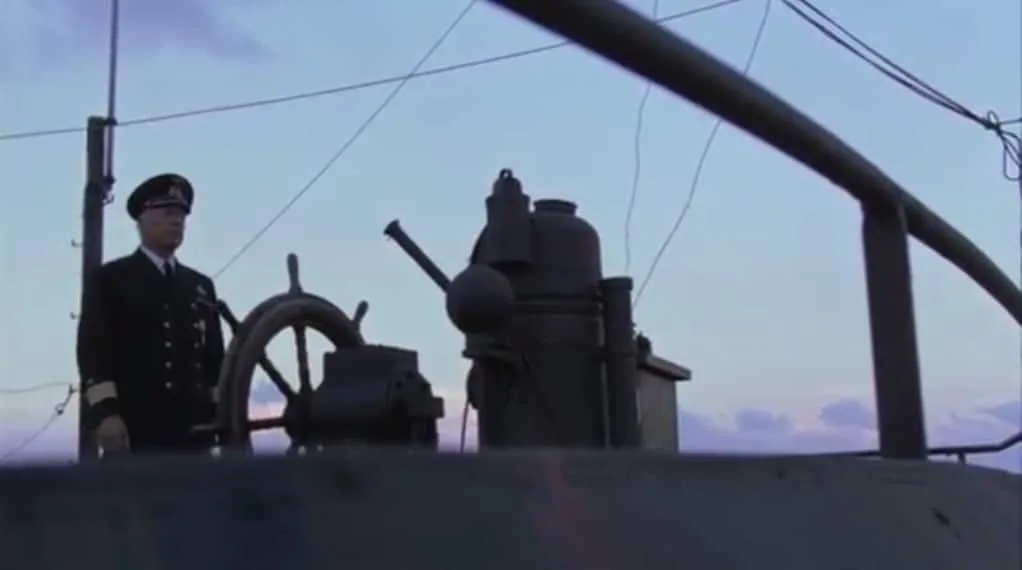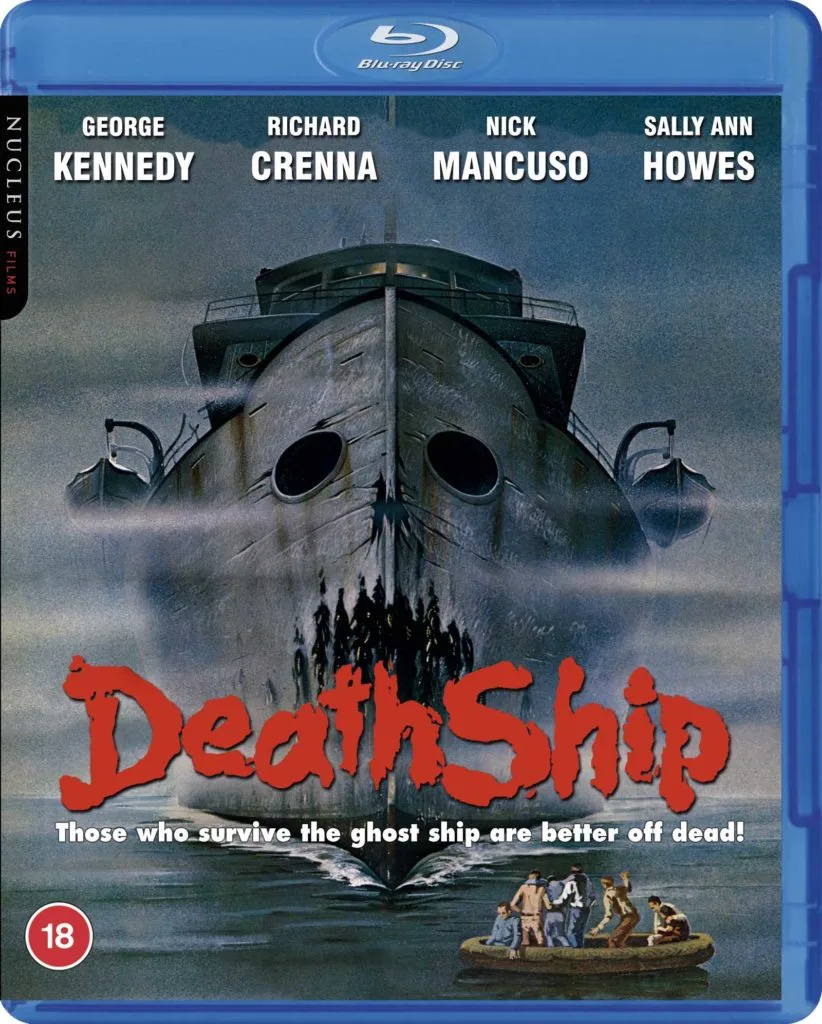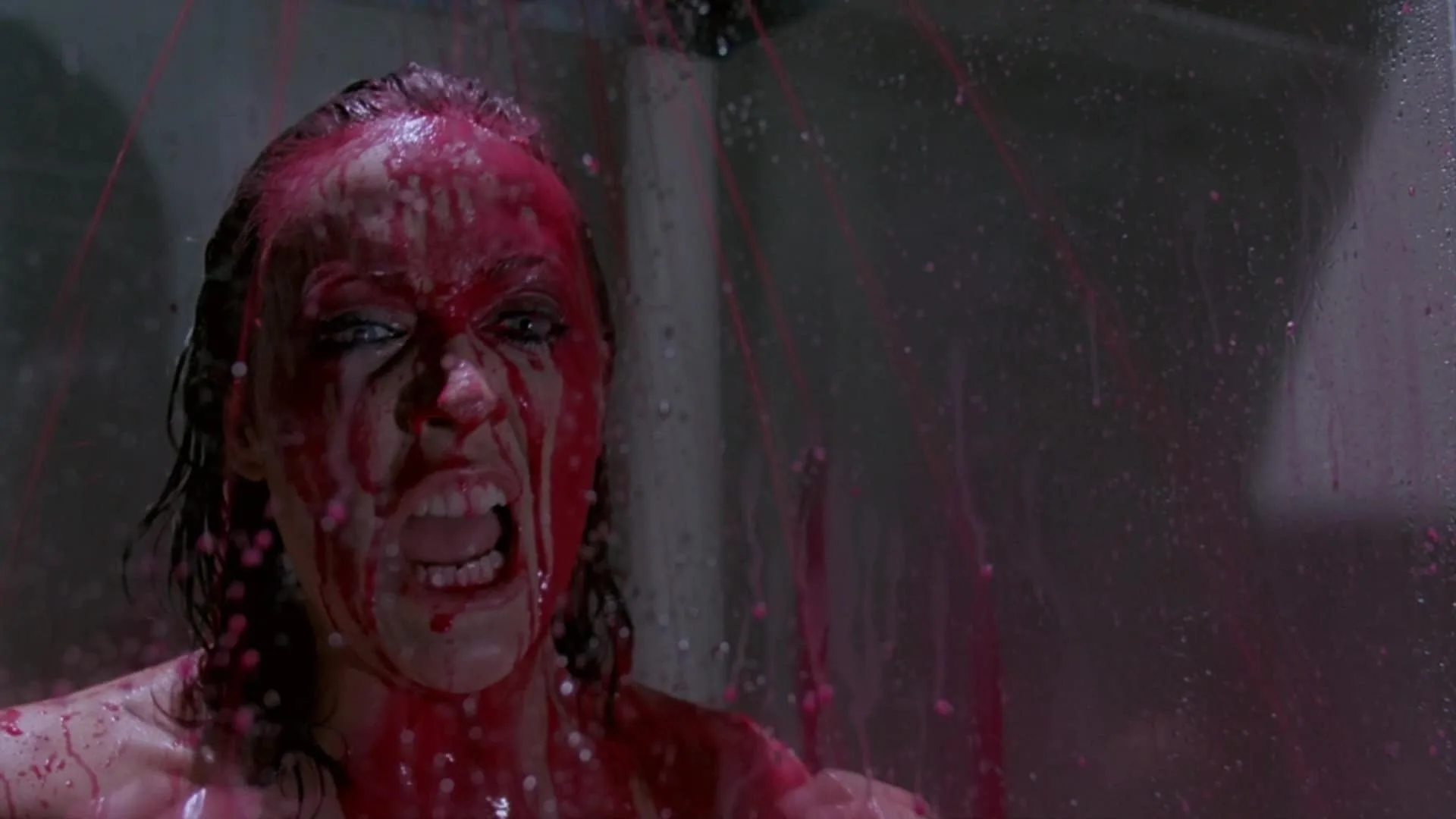
Death Ship has often been dismissed as a nautical rip-off of The Shining, but we should note that both films opened in the UK at almost the same time – not that such facts necessarily mean anything, given how long Kubrick’s film was in production, but this might be less a copycat and more one of those odd genre coincidences that often see themes explored simultaneously and coincidentally. To muddy the waters further, Death Ship only vaguely resembles The Shining anyway, and we need to remember that the idea of bad spirits taking over an individual were not exactly a new idea – indeed, The Amityville Horror had explored that very theme a year earlier, and so could equally be held responsible for Death Ship. But I digress.
Made in 1980, Death Ship was something of an anomaly at the time – while the ghost story was having something of a revival (with The Changeling, The Hearse and, a year later, Ghost Story all joining the aforementioned titles), the film didn’t quite gel with those films; neither did it fit with the slasher movies, the zombie gorefests or the exploitation movies of the time, even if it tries to channel aspects of many of those films from time to time. That’s not a bad thing, especially seen decades out of context – originality should never be sniffed at. But in truth, Death Ship often seems to be a film drifting as aimlessly as its characters, never quite sure of what it wants to be – one minute playing with atmospheric imagery, the next engaging in gratuitous excess.
The film opens with Captain Ashland (George Kennedy), a cruise ship captain making his last voyage. Ashland is the Basil Fawlty of cruise ship captains, so it’s no surprise that he has been given the boot. Making things extra awkward is the fact that his replacement, Trevor Marshall (Richard Crenna) is along for the trip, complete with wife and annoying children. In classic disaster movie style (and this is as much influenced by the likes of The Poseidon Adventure and such as anything), we are introduced to assorted characters early on who will be the survivors once the Bad Thing happens, including sexpot Lori (Victoria Burgoyne), her love interest, crewman Nick (Nick Mancuso), and ship’s entertainer Jackie (Saul Rubinek). There’s only a token effort to establish these supporting characters, unfortunately, before the film steams ahead into disaster – in this case, the mysterious appearance of a ship that seems hell-bent on a collision course, and rams the cruise ship, sending it to the bottom of the sea with just a handful of survivors, most of whom seem to be crew. No Titanic spirit here, clearly. Or maybe this ship had even fewer life boats than that infamous vessel, given that this handful of survivors are all clinging to a piece of wreckage. They find Ashland floating, unconscious, and pull him on board before bumping into the mysterious ship that had rammed them. And I do mean ‘bumping into’, as apparently no one on the raft noticed a huge ship until it was on top of them.
This odd lack of observation and curiosity continues, as no one – not even the crew members who were aware of what had caused the collision – seem to connect this ship to the accident, no one really questions why the ship is entirely deserted and even when Jackie is caught up by a cable, hoisted into the air and then plunged into the sea – actions that could not have happened unless things were being controlled by some force – there is no suspicion voiced.
This rather casual attitude to danger and mystery continues, even as everyone sits down to enjoy a 1930s film in a projection room and fellow survivor Mrs Morgan (Kate Reid) is suddenly aged terribly by a piece of hard candy found in the ship’s storeroom – a warning, if any were needed, that noshing on fifty-year-old food in an abandoned ship is not something to do casually. Rushing from the room, she encounters a suddenly-awoken Ashland, who promptly strangles her. These events also seem to cause surprisingly little concern. But Ashland has now become possessed by the spirits of the ship’s crew, and this is not just any crew – they are Nazis. Real, Third Reich Nazis, by the way, not just someone being contrarian on Twitter. The ship turns out to be a floating torture chamber – because the Nazis definitely had those – and the spirits of the dead – tortured and torturer alike, it seems – live on.
Eventually, even the laid-back survivors start to feel that the ship is probably an unhealthy environment, but too late – the ship’s spirits have lowered the life boats, preventing any escape. A psychotic Ashland is on the prowl. Things are looking bad. So obviously, Lori decides to take a shower. Well, why not? This is, after all, a 1980 horror movie and it has been oddly lacking in gratuitous nudity so far. Unfortunately for Lori, the shower starts pouring blood instead of water, and the door is locked. While Nick runs around looking for help (because of course, everyone seems to have chosen cabins as far away from each other as possible), Lori spends an unusual amount of time cowering naked, covered in blood. Oddly though, this scene – widely dismissed as unnecessarily gratuitous – is perhaps the one moment where Alvin Rakoff’s film shows a real sense of visual style, with impressive overhead shots and constant cutting between the shower and the panicked Nick. It’s impressively intense, shocking and creepy, and you wish that the rest of the film had shown a similar gumption.

After this, it all becomes rather plodding again. Ashland – dressed as the Nazi ship captain – wanders around trying to bump off the remaining cast, sometimes barking orders at his ghostly crew. He stays lucid long enough to explain that the ship is hunting down other vessels in order to feed on the blood of survivors, and this lust for blood will prove to be his undoing, as the ship’s needs eventually override even the orders of its new captain…
If there is one overriding problem with Death Ship, it is this: the film is too restrained for its own good. The odd visual set-piece aside, it all too often plods through the events with a lack of urgency that is frustrating. It’s frustrating because there’s talent to spare here – a solid cast of decent character actors, decent production values and a good idea lurking in the background, sadly undeveloped. You have to wonder what Jack Hill – a director who has never made a boring film – would have made of this, had his story (originally called Bloodstar) been developed into a screenplay and he taken the directorial helm. Alvin Rakoff has done some interesting work for both cinema and television, but horror does not seem to be his forte, and this is a film that perhaps needed a bolder vision to make the eccentric premise work. As it is, the film feels somewhat caught between a desire to be a ‘respectable’ horror film and the commercial requirements to be shameless exploitation, eventually falling between the two stools and not really satisfying anyone.
Nucleus Films have, at least, gone out of their way to make this new Blu-ray appealing. As well as presenting the newly extended and remastered edition, the disc features a commentary by Rakoff (who opens by saying that he never wanted to make the film and then continues to make excuses) and a retrospective documentary (in which everyone makes excuses), plus alternative TV scenes and, most significantly, trailer galleries featuring the work of Rakoff, Hill and producer Alan Greenberg (who produced a lot of exploitation and horror classics) – 78 minutes of trailers for films like Spider Baby, Mondo Keyhole, The Big Doll House and Coffy (and that’s just the Jack Hill selection). Essentially worth the price of the disc alone.
Death Ship is available now from Nucleus Films. For more information, click here.
